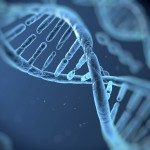Link to Pubmed [PMID] – 24957570
Pflugers Arch. 2015 Jan;467(1):49-72
The hair bundles of cochlear hair cells play a central role in the auditory mechano-electrical transduction (MET) process. The identification of MET components and of associated molecular complexes by biochemical approaches is impeded by the very small number of hair cells within the cochlea. In contrast, human and mouse genetics have proven to be particularly powerful. The study of inherited forms of deafness led to the discovery of several essential proteins of the MET machinery, which are currently used as entry points to decipher the associated molecular networks. Notably, MET relies not only on the MET machinery but also on several elements ensuring the proper sound-induced oscillation of the hair bundle or the ionic environment necessary to drive the MET current. Here, we review the most significant advances in the molecular bases of the MET process that emerged from the genetics of hearing.

